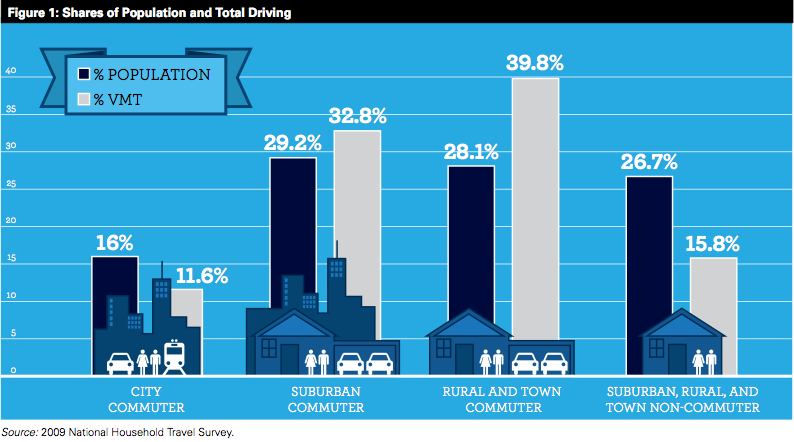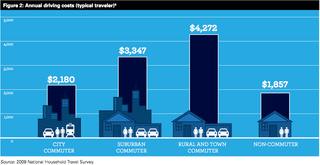
Rob Perks is the transportation advocacy director for the Energy & Transportation Program at the Natural Resources Defense Council (NRDC). This article was adapted from his blog post on NRDC Switchboard. He contributed this article to LiveScience's Expert Voices: Op-Ed & Insights.
My friend Megan, who lives in a suburban neighborhood a few miles from my home, took a new job last year and, lo and behold, her office is right next door to mine in downtown Washington, D.C. I remarked that it seemed odd that we never bump into each other on the daily commute.
That's because Megan fights traffic driving to work every day instead of riding the Metro commuter train, as I do. When I asked why, she explained that commuting by car is more convenient and cost-effective because she can park for free at her office. If Megan were to take Metro, she'd have to drive a couple miles to the nearest transit station and pay for parking, then walk a few blocks from the downtown station to the office. Driving seemed to save her time and money.
I was perplexed by her logic. Then again, I live just a short walk to the train station so it's definitely more convenient and cost-effective for me to ride the rails rather than slog through rush hour. Megan acknowledged that sometimes the drive home after work can take twice as long as the train ride, plus she pays for fuel and also wear and tear on her car — including having to replace her brakes a lot more often. By the end of our chat, she was re-thinking the perceived benefits of commuting by car.
That conversation over pizza and beer was the impetus for a study my colleagues and I produced at NRDC. You see, all across the United States, a shift is taking place. Increasingly, Americans are choosing to live in walkable communities with convenient housing, offering more transportation that allow people to live closer to their jobs, and shops and schools, rather than spend time stuck in traffic. Along with the personal freedom those communities provide, it's exactly the kind of growth the nation needs to cut pollution, save money and create a vibrant quality of life.
But for many Americans, whether they live near or far from metropolitan areas, commuting for work is costing them time and money. NRDC’s new study, Driving Commuter Choice in America: Expanding Transportation Choices Can Reduce Congestion, Save Money and Cut Pollution, shows that people who use alternative transportation — car pooling or public transit — or who work from home could save, on average, up to $1,800 annually compared to those who drive regularly. By adopting the strategies contained in the report, NRDC estimates that commuters can reduce their total vehicle miles traveled by 10 percent to 50 percent.

With gas prices on the rise, many commuters are already turning to travel modes like public transportation, as attested by ridership on local buses and trains rising to record levels not seen since the 1950s. One of the fastest, cheapest ways to solve the problem of high gas prices and to break the United States' addiction to oil is by investing in clean, efficient modes of transit that let Americans go farther on a gallon of gas — or no gas at all.
Sign up for the Live Science daily newsletter now
Get the world’s most fascinating discoveries delivered straight to your inbox.
According to NRDC's analysis, if 25 percent of Americans adopted transit or other alternatives to driving for their daily commute, the United States could reduce transportation fuel use by billions of gallons per year and save consumers tens of billions of dollars in transportation spending each year. Many communities also would see less congestion in large urban areas, less need for new infrastructure, and less wear and tear on roads, leading to lower infrastructure maintenance costs.
The NRDC report recommendations include:
- Increase public transit use: Increasing public transit use on round-trip work commutes for four days (or eight trips) each month can reduce driving costs by 14 percent to 26 percent.
- Increase carpooling: Switching to carpooling 20 days per month reduces the number of driving trips and vehicle miles traveled, and can reduce an individual's driving costs by about 40 percent to 50 percent.
- Increase trip-chaining: Use trip-chaining (mostly by planning trips in advance) for errands, appointments, etc. Reducing non-work trips by 75 percent per month could reduce driving costs by 10 percent to 15 percent.
- Increase telecommuting: Telecommuting four days each month could reduce driving costs by up to 14 percent. Even a modest expansion of telecommuting could save Americans a total of $1.9 billion annually and reduce oil demand by 20 million barrels of oil per year.
NRDC's report recommends policy solutions to invest in expanding transportation choices, which would allow more Americans to enjoy the freedom of being able to travel shorter distances or less often by car.
But for the vast majority of people, like my friend Megan, commuting usually comes down to cost and convenience. If it's free to park at an office complex or it takes longer to get to work by taking a circuitous bus stop than to drive there directly, more people will have little choice but to take a car. Which is all the more reason to expand transportation choices to make it more convenient to commute by transit or to carpool or telework.
By providing better transportation solutions and building more vibrant, walkable, transit-oriented neighborhoods — fostering good growth over gridlock — we can make our communities more sustainable and our commutes more convenient.
This article originally appeared as New NRDC Study: Commuters Can Save Money and Cut Pollution on the NRDC blog Switchboard. The views expressed are those of the author and do not necessarily reflect the views of the publisher. This article was originally published on LiveScience.com.














